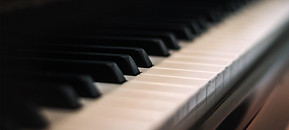Ken, 910/309-4871
Jonathan, 910/818-2411
What About My Older Piano?
- - - - - - - - - - - - - - - - - - - - - - - - - - - - - - - - - - - - - - - - - - - - - -Many people have asked me whether it is smart to "fix up" an older piano. My answer is generally yes but with some explanation. Especially for those who have some family attachment to the piano such as "been in the family a long time" and "I remember my grandmother, (aunt, mother, etc.) playing it." The cost of reconditioning an older piano is not as great as one would think. I have given below a list of typical tasks that would bring your piano up to, what I call, the "Reconditioned Level."
1. Complete Clean and Tighten (all dust removed from all surfaces and tighten cabinet screws)
2. Check and replace any felt parts under keys as needed
3. Check and adjust (regulate) action parts (the unit that has all the hammers that hit the strings in it)
4. Tune to optimum pitch depending on age of piano and length of time since last tuning
5. Repair of any cabinet parts and covers (may include hinges and wooden key covers, etc.)
The Cost is by estimate only (I have to see and test your piano to see what it will need...this is free)
More On Piano Tuning:
- - - - - - - - - - - - - - - - - - - - - - - - - - - - - - - - - - - - - - - - - - - - - -
-
Description: What does a piano tuner do to your piano?
-
Takes a few minutes to look over the general condition of your piano and ask any questions that will help him do a good job.
-
Opens up the piano cabinet by removing the cover(s) to allow him to look inside and reach the tuning pins. More evalution is made.
-
The overall pitch of the strings is checked to see how close to "standard pitch" you piano is. (Note "A" near "middle C" needs to be at 440 cycles or vibrations per second. This pitch allows you to play your piano with recorded CD music if desired and keeps the "health" of the piano in good condition.
-
All 225+ strings are checked for proper pitch and tuned as needed. This process can take longer if the piano is quite "out of tune."
-
A good tuner will play for a while and recheck the notes before he says it is properly tuned.
-
Minor adjustments in pedals should be made and obviously loose cabinet and bench screws should be tightened.
-
-
More on Pitch: If your piano has not been tuned for a long time or if there are other reasons such as rusty strings, etc., the tuner may suggest tuning your piano to a pitch LOWER than standard pitch. Most pianos that are very flat do not stay in tune very well if tuned to the standard pitch and will sound bad again too soon after the tuning. The tuner can plan to keep an older piano at the lower pitch or he may plan to "bring up the pitch" in later tunings. If your piano is in good condition, standard pitch can be accomplished in 2 to 3 more tunings.
-
Frequency: The average home piano should be tuned at least once a year. If it has been several years since it was tuned, one or two additinal tunings may be necessary to get your piano to the point where once a year is sufficient.
-
Age: The age of your piano is not as important and its original quality and the amount proper care the piano has been given. An older piano properly cared for might be in better shape than a newer one that has been neglected or abused.
-
The "Needs List": When the tuner evaluates your piano and more work is necessary, he can give you an estimate of work needed. The list should include:
-
An explanation of the repair, replacement, or adjustment listed item by item
-
Materials needed
-
Estimated Cost of the repair or adjustment
-
Your tuner should explain the urgence of each repair or adjustment and tell you in what order the work should be done.
